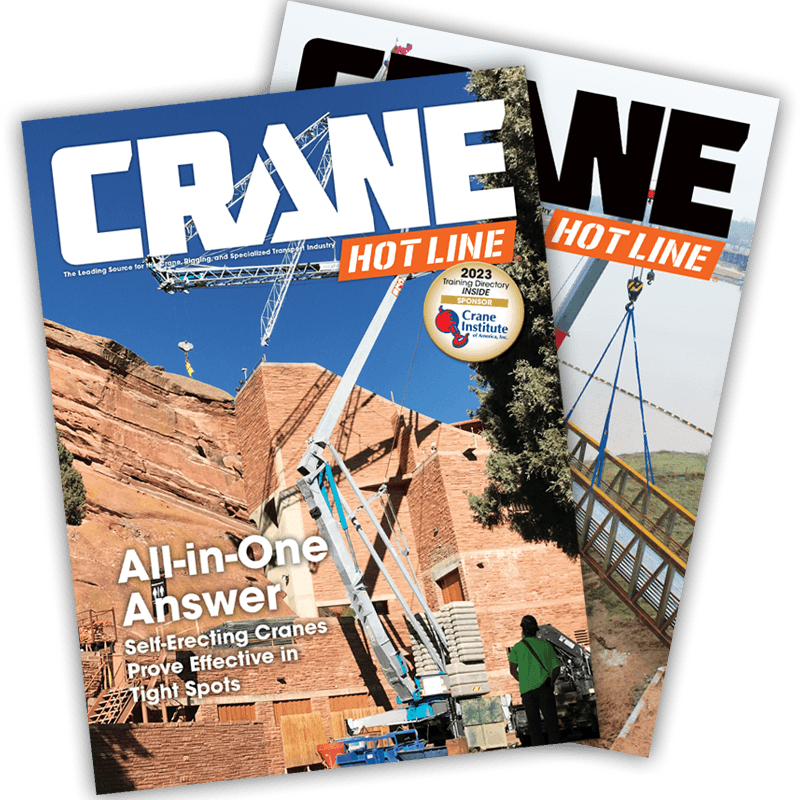Proper Setup of Mobile Cranes and Outrigger Usage
Adapted from the North American Crane Bureau's Professional Development Conference, held Nov. 12-16 in Las Vegas, Nev.
December 5, 2007 • While crane operators might think they know the basics of crane setup, the fact is that accidents still happen and everyone needs a refresher. One fundamental requirement for safe mobile crane setup is to read and understand the operator's manual. Although it's one of the cardinal rules of crane use, it is often overlooked. To know proper setup protocol, the operator needs to be familiar with load charts and must know the manual, including foot notes. Another rule of thumb: When manufacturer requirements differ from consensus standard requirements, defer to the more stringent standard.
A crane is properly setup to perform only after certain environmental conditions are met, so a survey of the surroundings is mandatory. Surveying the area is the backbone of a safe lift. Bad lift conditions can equal big problems. If you're on concrete it doesn't mean you have a supported surface • you might punch through the concrete trying to pick up a load. The ground needs to be solid, and operators need to know what the condition of the soil is, especially when getting into critical lifts. Be aware of how weather and temperature can affect crane setup. Ground that is frozen solid in the morning or overnight may not be safe come afternoon. Also watch out for hidden dangers, such as drainage ditches and culverts that can collapse if they go unnoticed.
Power lines are also a deadly hazard. Make sure power lines are de-energized and put insulators on if it's necessary to operate near one. Also have a qualified signalperson because there is no room for error when it comes to electricity. Clear the work area of all but the most necessary jobsite personnel, using barricades if necessary. If an accident does occur, having a minimal number of people at the site lessens the chance of unnecessary injuries.
Another important step is crane inspection. On the wire rope, check for broken, worn and abraded wires, rope diameter, lubrication, corrosion, rope stretch, kinks, gaps, and bulges. Check outriggers, and make sure that hoses aren't leaking hydraulic fluid. Go over pins, making sure there is no play in the pins, and grease necessary pins so they are fluid and smooth. Set swing lock. Inspect the boom, checking for cracks rust and corrosion and make sure it's properly lubricated. Address any deficiencies before using the crane. Leaks need to be addressed and fixed. Diligence in crane inspection helps prevent accidents before they happen.
As for boom setup, find the shortest boom length for the job and ensure there is room to erect and extend the boom. Have blocking available to support the boom while it is being assembled and dismantled. Know the maximum radius, maximum loads and maximum lift height of each lift and allow for adequate swing clearance between the counterweight and any obstacles. Make sure there is sufficient counterweight to get the boom off the ground, and do not exceed allowable structural loads.
On Outriggers
If the crane is being used for “on outrigger” operations, check that outriggers are extended per the manufacturer's recommendations. The outrigger pads must be level within 1 percent on compacted soil or supported by cribbing/blocking. All tires must be clear of the ground and free of any weight. Know the boom length, boom angle, load radius and operating quadrant and the machine's rated capacity for these variables. The accurate load weight must be known to be able to select proper rigging. Rigging must be selected to support and balance the load, and applied so that the center of gravity of the load is directly under the load hook. Make sure you're using chain falls/come alongs that can handle loads.
If using a truck-mounted crane equipped with a front jack cylinder, the cylinder must be set in accordance with procedures listed in the manual. Matting is required whether the soil is compacted or not.
Crawler-mounted and on rubber
For crawler operations, the crane must be on a level compacted area or supported with blocking. Crawlers must be properly extended, unless they have a chart for them to be otherwise. For “on rubber” operations, the crane must be on level, compacted soil with the tires in proper condition and properly inflated. If the crane is equipped with axle lockouts, they must be functioning before lifting on rubber. Proper tire inflation is critical for the stability of the crane when lifting on rubber. If a tire blows out, the crane could tip.
Know the boom length, boom angle, load radius and operating quadrant and the machines rated capacity for these variables. Accurate load weight must also be known. Rigging must be selected to support and balance the load, and applied so that the center of gravity of the load is directly under the load hook. Before making the lift, make sure no obstacles are in the path so that you don't get around a corner and see that you can't continue.
Crane setup utilizes many steps and takes different criteria into consideration. Proper site evaluation, crane and rope inspection, boom and assembly are all necessary for the safety of personnel and property. It is also essential to understand how proper setup can have a profound effect on load capacities. Remember that once a lift occurs, the crane operator has full responsibility for everything that happens. Also, don't forget that disassembly is just as important as setup. Don't become complacent at the end of a job and cut corners.


